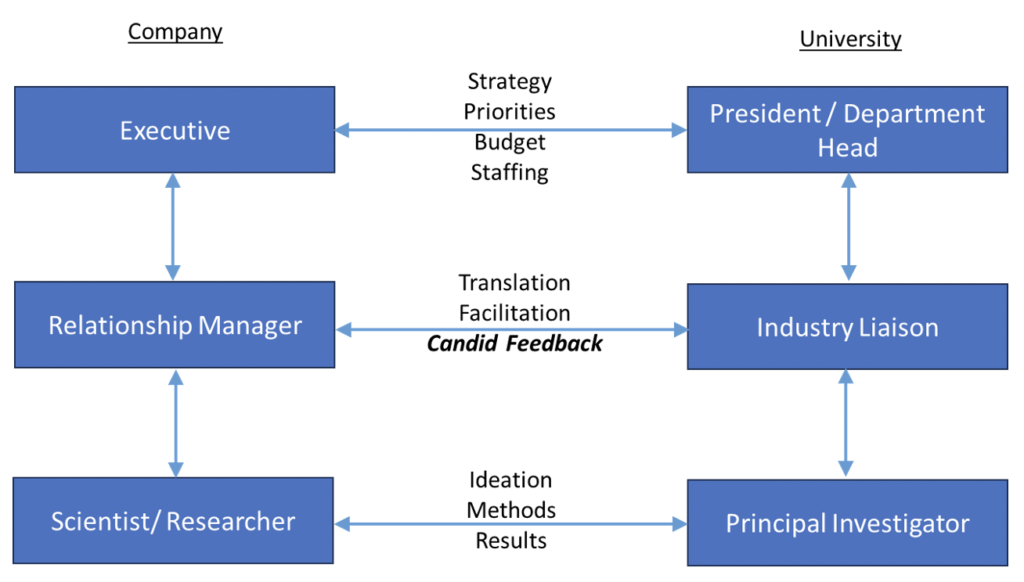During the course of a collaboration, a wide range of opportunities and threats will present themselves that will require a good understanding of the other partner’s broader context and current reality.
The level of trust largely depends on how well the people managing the partnership communicate. However, there are practical ways to strengthen trust between organizations.
Strengthening Trust: Understand your partner’s broader context
At the beginning of a University-Industry research collaboration most, if not all, of the focus is on the specific research topics, and the dialogue is between the sponsoring company team and the university department involved. Periodic informational briefings on broader company and university priorities and policies create a shared understanding of each partner’s objectives and helps build a shared understanding of each partner’s goals. The understanding underpins trust and in addition may highlight opportunities for collaboration beyond the partnership’s defined scope.
A company’s “clock speed” is generally much greater than a university. Changes in company priorities, budgets, and organization can have an enormous impact on a long-term university partnership. If the university team already have a broad understanding of the company context, this will help the partnership navigate shifts without compromising trust.
Strengthening Trust: Leadership transitions
Changes in leadership within either partner will temporarily affect trust. The impact can be mitigated by holding a leadership transition meeting that includes both the outgoing and incoming leader alongside key players in the partnership. The meeting enables the outgoing leader to reflect on the strengths, weaknesses, opportunities, and threats of the partnership while the incoming leader gains insights into the relationship’s history and shares priorities for the future.
Strengthening Trust: Handling Mistakes
In any long-term partnership mistakes and misunderstandings will occur and it is important these are addressed in a prompt fashion. Consider a scenario where:
- a graduate student inadvertently shares background company IP at a public poster session, or
- a company shareholder report includes a description of the university partnership without prior review by the university team.
How a mistake is dealt with depends on how mature the partnership is and the specific details. It is crucial to have the right structures and people in place to quickly solve problems.
Figure 1 shows a partnership structure that allows for communication through various channels. The level and frequency of communication vary at each level, but this wide communication range makes the partnership more resilient.

Strengthening Trust: Regular relationship review
In larger partnerships, regular joint reviews are essential. Reviews should include honest discussions about the relationship’s quality, focusing on the “how” as well as the “what.”
The company relationship manager and university liaison will typically be in frequent contact and hold a close working relationship to monitor the partnership’s health and promptly address opportunities and issues as they arise.
An annual Executive Review of the partnership is recommended. A jointly prepared summary of partnership activities, including a qualitative assessment of collaboration progress, should precede the meeting.
The Bottom Line: Moving from Individual Trust to Organizational Trust
In a University-Industry partnership, transitioning from individual to organizational trust is an ongoing process. By fostering trust at both personal and organizational levels, partners create a foundation for a robust collaboration that endures over time and adapts to change.

Andrew Cockerill
Consultant
UI Collab
